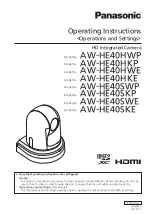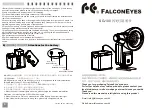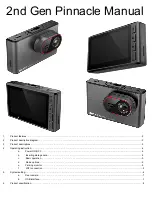
Figure 4.22: LFSR test image
In the histogram you can see that the number of pixels of all grey values are the same.
Please refer to application note [AN026] for the calculation and the values of the LFSR test
image.
Troubleshooting using the LFSR
To control the quality of your complete imaging system enable the LFSR mode and check the
histogram. If your frame grabber application does not provide a real-time histogram, store the
image and use a graphics software to display the histogram.
In the LFSR (linear feedback shift register) mode the camera generates a constant test pattern
containing all grey levels. If the data transmission is error free, the histogram of the received
LFSR test pattern will be flat (Fig. 4.23). On the other hand, a non-flat histogram (Fig. 4.24)
indicates problems, that may be caused either by the cable, the connectors or the frame
grabber.
A possible origin of failure message can be caused by the CameraLink cable
which exceeds the maximum length or suffers from severe electromagnetic in-
terference.
Some CameraLink cable have predefined direction.
The LFSR test works only for an image width of 1024, otherwise the histogram
will not be flat.
4.3 Pixel Response
33
Summary of Contents for MV-D1024E-3D01-160
Page 1: ...User Manual MV D1024E 3D01 160 3D CMOS Camera MAN037 04 2009 V1 1...
Page 2: ......
Page 4: ...2...
Page 8: ...CONTENTS 6...
Page 20: ...3 Product Specification 18...
Page 57: ...5 2 CameraLink Data Interface 55...
Page 66: ...5 Hardware Interface 64...
Page 84: ...7 Graphical User Interface GUI 82...
Page 90: ...9 Warranty 88...
Page 92: ...10 References 90...
Page 96: ...A Pinouts 94...
















































